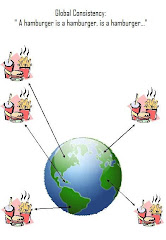Quality Defined
Quality is a complex dimension of a product or service that is often related to both tangible and perceptual aspects defined by the customer.
In general, quality can be defined as meeting or exceeding the expectations of the customer. Quality is one of the key dimensions of customer value; however, customers define quality in various ways.
Customer Value = Time, Flexibility, Quality / Price
Quality as a Competitive Priority
Firms must develop a sustainable competitive advantage; one that is a combination of firm processes, skills, and/or assets that combine to create an impression in the eyes of the customer. Firms can formulate an effective strategy by leveraging their core competencies. This strategic planning involves the firm selecting various sets of activities that they feel will help them reach specific goals more efficiently and effectively.
To distinguish themselves from competitors, organizations must develop an advantage within their operations. The challenge isn’t necessarily finding an advantage, it’s choosing the right one. This competitive advantage should be one that can be sustained long-term and more importantly, cannot be easily replicated by competitors. This is not as simple as lowering prices and developing new products, as both of these can be copied quickly and easily.
Two competitive priorities in operations management involve quality: high-performance design and consistent quality.
High-performance Design: The level of functionality or particular attributes that is specified for operations to make a product or perform a service.
Conformance Quality: Captures the level of consistency of a firm's ability to provide a product or service.
Consistency is the process of repeatedly producing a good or service in the same manner. This concept is not centered on the level of quality, which can be high or low. Rather, the item or service is delivered in exactly the same way, with the same level of quality each time it is produced or performed. Such operations yield consistent products with low variability.
Either of these two competitive priorities can be optimized to characterize an organization’s competitive thrust. Strategic plans that recognize quality as an essential competitive priority must be based on some operational definition of quality.
McDonalds: Consistency a Core Competency

McDonald’s goal is straightforward: to give customers a similar dining experience anywhere in the world and maintain high standards of service and quality- fast, accurate, and friendly.
McDonalds is well-known for its consistency in the production of hamburgers.

Each of us expect every McDonald’s sandwich to be similar to the last one. We expect consistency without regard to geographic location or time of day. McDonald’s meets these expectations by maintaining rigorous standards in their production process. Their trademark competitive edge was its process management approach in which the company put hamburgers on the assembly line.
How McDonald's Ensures Consistent Quality

- They carefully match the level of service quality with product design.
- Uniformity in production is a major goal.
- Product design concentrates on maintaining consistency in how products are presented.
- Efficient service delivery-concentrates on meeting time demands of customer.
- Seek to measure results of training through competency tests, feedback, and “mystery diners”.

- Repetitive emphasis on consistency is a primary competitive advantage over competitors.
- Provide rigorous employee training for handling and preparation of food.
- Global standardized operations.
- Their product design concentrates on maintaining consistency in how products are prepared as well as what raw-food components are used.
.JPG)

- Quality is ensured through standardized and careful employee training efforts.
Benefits Related to Consistent Quality
- Provides cost standards for other outlets within the organization.
- Enables cost efficiencies.
- Benchmarks set for productivity.
- Areas of weakness can be easily detected and evaluated.
- Higher quality (ie. greater consistency/less variablility) can also translate into lower costs, which result in greater return for the same sales dollar.
- prevention costs may be higher, but other costs will be reduced and avoided in long-run.
- Reduces uncertainty in minds of customers.
Difficulties Faced With Consistent Quality
Although McDonalds has pioneered and standardized the approach to commercial production of fast food, they may have difficulties capitalizing on continuousily changing consumer preferences.

.JPG)
